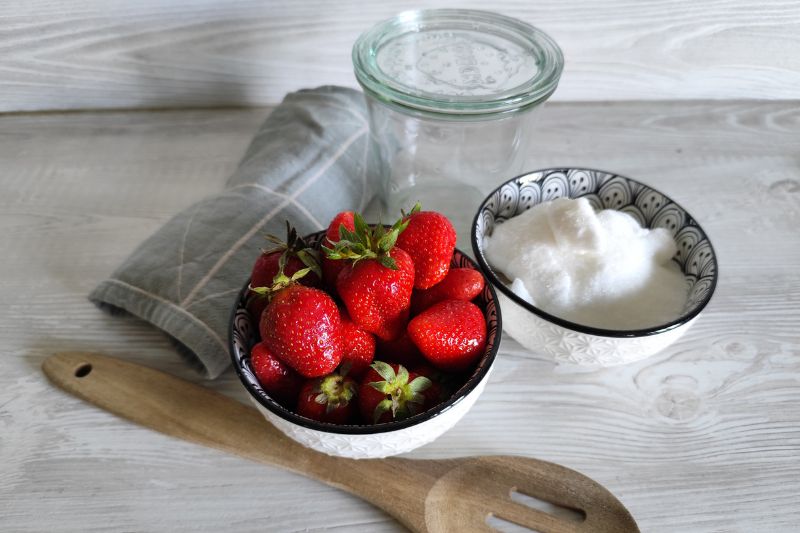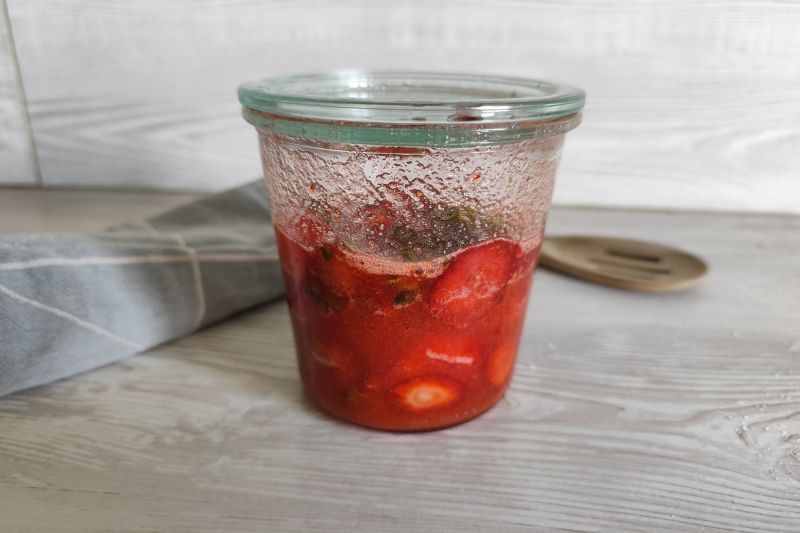When the strawberries in the vegetable garden yield abundantly, it's the perfect time to prepare homemade strawberry koso. Koso is a fermented preparation of Japanese origin made from fruits, plants, and sugar, which allows for a naturally flavoured syrup, without cooking. Here, we will use whole, ripe strawberries, but we can also use strawberry tops, which are still rich in aromas and often collected after making jams or other treats.
Easy to make, this koso offers a delicately flavoured syrup, to be enjoyed neat, diluted in water, or to enhance your desserts, yoghurts, and homemade drinks. Discover how to easily make your own strawberry koso.
How to prepare strawberry koso?
Making koso is simple and requires only a few ingredients, provided you follow a few essential rules to obtain a quality fermented syrup.
To successfully ferment the strawberry koso, we rely on the flora naturally present on the fruits. For this recipe, use untreated strawberries, ideally from the garden, and avoid washing them with large amounts of water to facilitate fermentation.
Ingredients
- 200 g of whole, ripe fresh strawberries, or strawberry tops with a bit of flesh.
- 200 g of unrefined blonde sugar (preferably organic).
- 1 clean, sterilised glass jar (type Le Parfait or Weck, but without the seal).
- 1 spoon

Preparation steps
1- Choose untreated strawberries, fresh, healthy, and ripe. If using tops, they should be clean, fresh, and free from mould. If necessary, gently clean them with a cloth or a small dry brush to avoid removing all the beneficial bacteria for fermentation.
2- Cut the strawberries into quarters.
3- Alternate a layer of fruit (cut strawberries or tops) and a layer of sugar until the jar is full, finishing with sugar. Press down lightly. The sugar will gradually dissolve, and the fruits will release their juice.

4- Close the jar, but without a seal, so that the gases from fermentation can escape. Alternatively, you can cover your jam jar with a cloth or gauze secured with an elastic band. Place the jar at room temperature (18 to 22 °C), away from direct light.
5- Open the jar every day to gently stir with a clean spoon. This step allows oxygen to reach the mixture and prevents mould.
6- After 2 to 6 days, small bubbles will appear during mixing: this is a sign that fermentation is underway and that the syrup is ready.

7- Strain the preparation through a fine sieve or cheesecloth. Transfer the syrup to a clean bottle, with an airtight cap, and place it in the refrigerator.
Note:
- Warning: If mould forms or the mixture emits a bad smell, fermentation has failed. Then discard the preparation.
- The room temperature influences the fermentation time. The higher the temperature, the faster the fermentation will be.
- The fermentation time for strawberry tops is generally shorter.
Storage of koso
The fermented syrup can be stored in the refrigerator for a maximum of 15 days, to fully enjoy its aromas and richness in micro-organisms.
Using strawberry koso
Strawberry koso can be used in many ways, like a syrup:
- to drizzle over plain yoghurt, skyr, or cottage cheese,
- to flavour still or sparkling water,
- to scent pancake batter,
- to drizzle over a cake,
- to flavour a vinaigrette.
It creatively replaces a classic syrup while adding a slightly tangy touch.
































Feedbacks